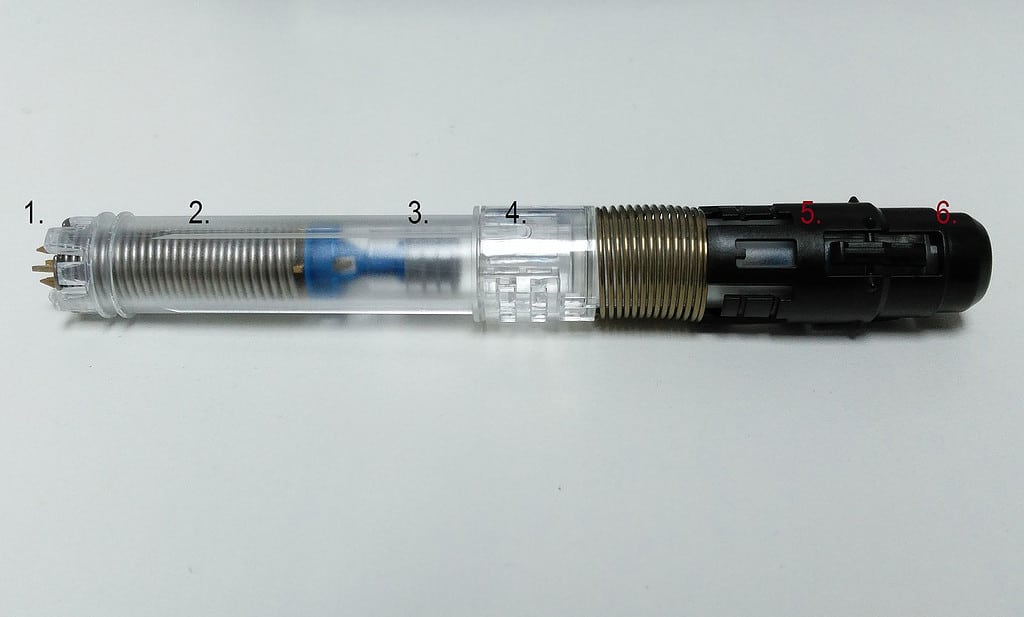An EpiPen is a medical device that is used to automatically inject a dose of epinephrine into a person’s body to overcome the effects of life-threatening allergic reactions. Can you guess what would happen if an astronaut who’s allergic to space dust opens their EpiPen in space and takes a dose? The astronaut might feel as if he or she has been poisoned because epinephrine, the anti-allergic medicine on Earth, becomes a toxin as soon as it enters space.

This eye-opening information is based on an experiment performed by a team of elementary school students in Canada. What’s more surprising is that until now, even NASA had no idea about EpiPens turning toxic in space. The students who conducted the EpiPen test are part of the program for gifted learners (PGL) at Ottawa-based St. Brother André School.
“The students were excited, and we ran with it,” their teacher, Deborah Quail-Blier, tells Dave Charbonneau of CTV News. “The results were actually quite shocking.”
Their experiment was previously selected for Cubes in Space, a NASA project that provides school-going children the opportunity to test their innovations in outer space via a suborbital flight mission. Now in June 2023, they will meet a team of NASA scientists to discuss their groundbreaking findings.
Testing epinephrine in space
Outer space is filled with radiation and space dust that comprises various harmful chemicals, gases, and elements. These materials are released by different cosmic bodies such as stars and planets. Since our planet is shielded by different layers of the atmosphere, we and other forms of life on Earth are safe from harmful space radiation. However, astronauts face this risk and this is why many of them experience radiation sickness.
A report on space radiation from NASA mentions, beyond low Earth orbit, space radiation may place astronauts at significant risk for radiation sickness, and increased lifetime risk for cancer, central nervous system effects, and degenerative diseases. Research studies of exposure in various doses and strengths of radiation provide strong evidence that cancer and degenerative diseases are to be expected from exposures to galactic cosmic rays (GCR) or solar particle events (SPE).”
However, it is not just the astronauts who are at risk. If you send any chemical to outer space, it could behave differently than how it behaves on Earth. This is because the chemical you send might react with other chemicals in space. The PGL students sent pure epinephrine and EpiPen epinephrine solution to space in two small NASA cubes; one on a rocket and the other on a space balloon.
When the cubes returned to Earth, they were sent to a lab at the University of Ottawa to test if the chemicals inside them went through any changes. Surprisingly, about 87 percent of the total epinephrine was still pure but 13 percent of the sample has turned into highly toxic benzoic acid derivatives. The epinephrine probably decomposed due to the conditions in outer space and therefore, the chemical was overall no longer suitable for human use.
“In fact, no epinephrine was found in the ‘after’ (returned) EpiPen solution samples. This result raises questions about the efficacy of an EpiPen for outer space applications and these questions are now starting to be addressed by the kids in the PGL program,” said Paul Mayer, a chemistry professor at the University of Ottawa.
These results clearly indicate that we’d either have to modify EpiPens or need new medical applications to deal with allergies in outer space. The PGL students have already started working in this direction. They are developing a capsule that would protect the epinephrine solution inside an EpiPen from decomposing in space. Hopefully, these talented kids will be successful in making EpiPens work for space travelers.
The experiment was first reported in a news release by the University of Ottawa.


